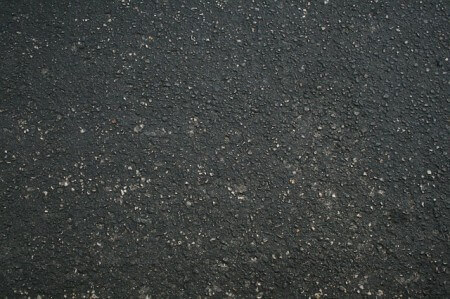For bituminous road construction, various steps and techniques are used such as interface treatment (tack coat, prime coat), surface dressing, and seal coat.
Steps in Bituminous Road Construction
The following 4 major steps and techniques are used for bituminous road pavement construction:

1. Interface Treatment
Before the construction of any types of bituminous layer over an existing pavement, the existing surface is cleaned and a thin bituminous layer is spread over the existing surface of the road.

This treatment with bituminous material is known as interface treatment. The interface treatment may either be a prime coat or a tack coat.
A. Tack Coat
A tack coat is an application of a bituminous binder to an existing pavement, which is relatively impervious (such as a bituminous surface or concrete pavement) to ensure a bond between new construction and old construction.
B. Prime Coat
A prime coat is an initial application of a low viscosity liquid material of an existing porous or absorbent pavement surface like a W.B.M. base course.
The main object of application of the prime coat is to block the voids and to promote adhesion between the existing base and the superimpose bituminous construction. Usually, an MC or SC cutback of suitable grade is used as a prime coat.
2. Surface Dressing and Seal Coat
Bituminous Surface dressing is provided over an existing pavement serve as thing wearing coat. The single coat surface dressing consists of a single application of bituminous binder material followed by spreading of aggregate cover and rolling.
When the surface dressing is done in two-layer, it is called ‘two coat bituminous surface dressing’.
Seal Coat
A final coat of bituminous material provided on the top surface course for scaling the voids is known as a seal coat. The main purpose of providing a seal coat is to make the surface watertight and to provide a more durable surface texture.
3. Grouted or Penetration Type Construction
This type of construction may be of the following two types:
A. Penetration Macadam
Bituminous penetration macadam or grout is used as a base or binder course. The coarse aggregates are first spread and compacted well in a dry state. After that hot bituminous binder is relatively high viscosity is sprayed in fairly large quantity at the top.
The bitumen penetrates into the voids from the surface of the compacted aggregates, thus filling up a part of the voids and binding some stone aggregates together.
When the bitumen penetrates full depth of compacted aggregates, it is called full grout macadam. When the bitumen penetrates about half depth of compacted aggregates, it is called semi-grout macadam.
B. Built-Up Spray Grout
Built-up Spray Grout (BSG) consists of two layers of compacted crushed aggregate with application of bituminous binder after each layer and finished with key aggregate at the top.
The total thickness of the compacted layer is generally kept 75 mm. This method is commonly used for strengthening of existing bituminous pavement. A suitable wearing course is provided over this layer before opening to traffic.
4. Premixed Type
In this technique, the aggregates and the bituminous binder are mixed thoroughly before spreading and compacting. The common types of techniques are as follows.
A. Bituminous Bound Macadam
Bituminous Macadam (BM) consists of one or more courses of compacted crushed aggregate premixed with bituminous material, laid immediately after mixing. The BM is laid of compacted thickness of 75 mm or 50 mm.
The BM is used for the construction of the base course. It should be covered by a suitable surfacing course before being exposed to traffic. It is considered much superior to other types of base course materials such as W.M.B.
B. Bituminous Premixed Carpet
Premixed Carpet(PC) consists of coarse aggregates of 12.5 mm and 10 mm sizes, premixed with bitumen or tar binder. The premixed carpet is generally laid in compacted thicknesses of 20 to 25 mm. It acts as a surface course of the pavement.
The premixed carpet is covered by a suitable seal coat such as a premixed sand bitumen seal coat before opening to the traffic.
C. Bituminous Concrete Or Asphalt Concrete
Bituminous concrete or asphalt concrete(AC) is a dense grade pre-mixed bituminous mix that is well compacted to form a high-quality pavement surface course.
The AC consists of proportioned mixture of coarse aggregate, fine aggregates mineral filler and bitumen. The thickness of AC surface course layer usually ranges from 40 to 75 mm.
D. Sheet Asphalts
Sheet asphalt or rolled asphalt is a dense sand-bitumen premix of compacted thickness 25 mm used as a wearing course. It consists of well-graded coarse to fine sand(without coarse aggregates) and a suitable penetration grade bitumen to form a dense and impervious layer.
Sheet asphalt is usually laid over cement concrete pavement to provide an excellent riding layer. It also protects the joints in cement concrete pavement and course, causes a reduction in warping stresses.
E. Mastic Asphalt
Mastic asphalt is a mixture of bitumen, fine aggregate and filler in suitable proportion. The mastic asphalt when cooled result in a hard, stable and durable layer suitable to withstand heavy traffic. The material also can absorb vibrations and has property of self-healing of cracks without bleeding.
Read Also:
8 Construction Procedure of Water Bound Macadam (W.B.M) Road
Advantages & Disadvantages of Water Bound Macadam(W.B.M)Road